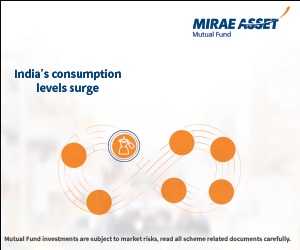Avoid 6 common Life Insurance mistakes

1. Underestimating insurance requirement: Many life insurance buyers choose their insurance covers or sum assured, based on the plans their insurance agents want to sell and how much premium they can afford. This a wrong approach. Your insurance requirement is a function of your financial situation, and has nothing do with what products are available. Many insurance buyers use thumb rules like 10 times annual income for cover. Some financial advisers say that a cover of 10 times your annual income is adequate because it gives your family 10 years worth of income, when you are gone. But this is not always correct. Suppose, you have 20 year mortgage or home loan, then how will your family pay the EMIs after 10 years, when most of the loan is still outstanding? Suppose you have very young children. Your family will run out of income, when your children need it the most, e.g. for their higher education. Insurance buyers need to consider several factors in deciding how much insurance cover is adequate for them.
- Repayment of the entire outstanding debt (e.g. home loan, car loan etc.) of the policy holder
- After debt repayment, the insurance cover should have surplus funds to generate enough monthly income to cover all the living expenses of the dependents of the policy holder, factoring in inflation
- After debt repayment and generating monthly income, the insurance cover should also be adequate to meet future obligations of the policy holder, like children’s education, marriage etc.
For more details on determining the amount of life insurance cover, please refer to our article, How much life insurance is adequate.
2. Choosing the cheapest policy: Many insurance buyers like to buy policies that are cheaper. This is another serious mistake. A cheap policy is no good, if the life insurance company for some reason or another cannot fulfil the claim in the event of an untimely death. Even if the insurer fulfils the claim, if it takes a very long time to fulfil the claim it is certainly not a desirable situation for family of the insured to be in. You should look at metrics like Claims Settlement Ratio and Duration wise settlement of death claims of different life insurance companies, to select an insurer, that will honour its obligation in fulfilling your claim in a timely manner, should such an unfortunate situation arise. Data on these metrics for all the insurance companies in India is available in the IRDA annual report (on the IRDA website). You should also check claim settlement reviews online and only then choose a company that has a good track record of settling claims.
3. Treating life insurance as an investment and buying the wrong plan: The common misconception about life insurance is that, it is also as a good investment or retirement planning solution. This misconception is largely due to some insurance agents who like to sell expensive policies to earn high commissions. If you compare returns from life insurance to other investment options, it simply does not make sense as an investment. If you are a young investor with a long time horizon, equity is the best wealth creation instrument. Over a 20 year time horizon, investment in equity funds through SIP will result in a corpus that is at least three or four times the maturity amount of life insurance plan with a 20 year term, with the same investment. Life insurance should always been seen as protection for your family, in the event of an untimely death. Investment should be a completely separate consideration. Even though insurance companies sell Unit Linked Insurance Plans (ULIPs) as attractive investment products, for your own evaluation you should separate the insurance component and investment component and pay careful attention to what portion of your premium actually gets allocated to investments. In the early years of a ULIP policy, only a small amount goes to buying units.
A good financial planner will always advise you to buy term insurance plan. A term plan is the purest form of insurance and is a straightforward protection policy. The premium of term insurance plans is much less than other types of insurance plans, and it leaves the policy holders with a much larger investible surplus that they can invest in investment products like mutual funds that give much higher returns in the long term, compared to endowment or money back plans. If you are a term insurance policy holder, under some specific situations, you may opt for other types of insurance (e.g. ULIP, endowment or money back plans), in addition to your term policy, for your specific financial needs. You can refer to our article, Choosing the right Life Insurance plan, to get a sense of the key features and suitability of different life insurance plans available in the market
4. Buying insurance for the purpose of tax planning: For many years insurance agents have inveigled their clients into buying insurance plans to save tax under Section 80C of the Income Tax Act. Investors should realize that insurance is probably the worst tax saving investment. Return from insurance plans is in the range of 5 – 6%, whereas Public Provident Fund, another 80C investment, gives close to 9% risk free and tax free returns. Equity Linked Saving Schemes, another 80C investment, gives much higher tax free returns over the long term. Further, returns from insurance plans may not be entirely tax free. If the premiums exceed 20% of sum assured, then to that extent the maturity proceeds are taxable. As discussed earlier, the most important thing to note about life insurance is that objective is to provide life cover, not to generate the best investment return.
5. Surrendering life insurance policy or withdrawing from it before maturity: This is a serious mistake and compromises the financial security of your family in the event of an unfortunate incident. Life Insurance should not be touched until the unfortunate death of the insured occurs. Some policy holders surrender their policy to meet an urgent financial need, with the hope of buying a new policy when their financial situation improves. Such policy holders need to remember two things. First, mortality is not in anyone’s control. That is why we buy life insurance in the first place. Second, life insurance gets very expensive as the insurance buyer gets older. Your financial plan should provide for contingency funds to meet any unexpected urgent expense or provide liquidity for a period of time in the event of a financial distress.
6. Insurance is a one-time exercise: I am reminded of an old motorcycle advertisement on television, which had the punch line, “Fill it, shut it, forget it”. Some insurance buyers have the same philosophy towards life insurance. Once they buy adequate cover in a good life insurance plan from a reputed company, they assume that their life insurance needs are taken care of forever. This is a mistake. Financial situation of insurance buyers change with time. Compare your current income with your income ten years back. Hasn’t your income grown several times? Your lifestyle would also have improved significantly. If you bought a life insurance plan ten years ago based on your income back then, the sum assured will not be enough to meet your family’s current lifestyle and needs, in the unfortunate event of your untimely death. Therefore you should buy an additional term plan to cover that risk. Life Insurance needs have to be re-evaluated at a regular frequency and any additional sum assured if required, should be bought.
Conclusion
Investors should avoid these common mistakes when buying insurance policies. Life insurance is one of the most important components of any individual’s financial plan. Therefore, thoughtful consideration must be devoted to life insurance. Insurance buyers should exercise prudence against questionable selling practised in the life insurance industry. It is always beneficial to engage a financial planner who looks at your entire portfolio of investments and insurance on a holistic basis, so that you can take the best decision with regards to both life insurance and investments.
Queries
-
What is the benefit of mutual fund STP
Aug 29, 2019
-
How much to invest to meet target amount of Rs 2 Crores
Aug 26, 2019
-
Can I achieve my financial goals with my current mutual fund investments
Aug 24, 2019
-
Can you tell me return of various indices
Aug 19, 2019
-
What would be the post tax return on different investments
Aug 18, 2019
-
Which Principal Mutual Fund scheme will be suitable for my retirement corpus
Aug 16, 2019
-
What is the minimum holding period for availing NCD interest
Aug 4, 2019
Top Performing Mutual Funds
Recommended Reading
Fund News
-
Edelweiss Mutual Fund launches Edelweiss BSE Internet Economy Index Fund
Apr 25, 2025 by Advisorkhoj Team
-
Bajaj Finserv Mutual Fund launches Bajaj Finserv Nifty 50 Index Fund
Apr 25, 2025 by Advisorkhoj Team
-
SBI Mutual Fund launches SBI Income Plus Arbitrage Active FOF
Apr 23, 2025 by Advisorkhoj Team
-
Motilal Oswal Mutual Fund launches Motilal Oswal Infrastructure Fund
Apr 23, 2025 by Advisorkhoj Team
-
Groww Mutual Fund launches Groww Gilt Fund
Apr 23, 2025 by Advisorkhoj Team













